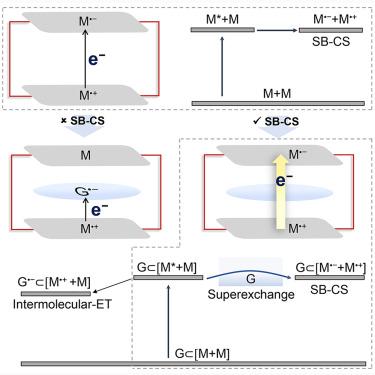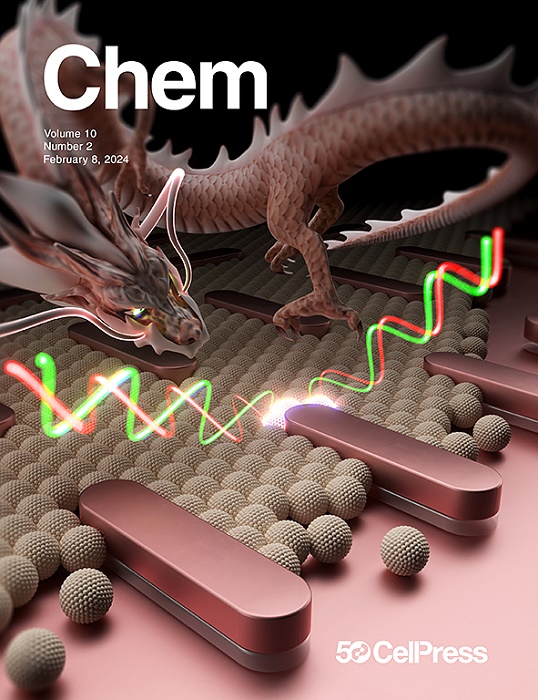利用分子识别操纵对称性破坏电荷分离
IF 19.1
1区 化学
Q1 CHEMISTRY, MULTIDISCIPLINARY
引用次数: 0
摘要
在设计功能性光收集材料时,探索对称破缺电荷分离(SB-CS)势在必行。然而,过去的探索仅限于共价系统,往往需要复杂/苛刻的合成,而且电荷转移过程的调节也不方便。在这里,我们提出了一个概念,利用基于吡啶的环烷作为宿主,通过分子识别来调节 SB-CS 的效率。这种宿主会发生光驱动激发态 SB-CS。通过采用具有不同前沿分子轨道能级的不同客体,我们实现了对环烷中电子传递途径的全面控制,在涉及超交换的加速(10 倍)分子内 SB-CS 与宿主和客体之间的直接分子间电子传递之间进行调节。SB-CS 效率的提高使得硫-芥末模拟物的光氧化反应具有催化活性。这项研究为利用分子识别技术调节 SB-CS 提供了一个机会,从而有可能在不进行复杂有机合成的情况下实现精确调节。本文章由计算机程序翻译,如有差异,请以英文原文为准。


Manipulating symmetry-breaking charge separation employing molecular recognition
The exploration of symmetry-breaking charge separation (SB-CS) is imperative when designing functional light-harvesting materials. Past explorations, however, have been confined to covalent systems, more often than not requiring complicated/demanding syntheses and facing inconvenient regulation of charge transfer processes. Here, we present a concept that regulates the efficiency of SB-CS through molecular recognition utilizing a pyridinium-based cyclophane as a host. This host undergoes photo-driven excited-state SB-CS. By employing different guests with distinct frontier molecular orbital energy levels, we have achieved comprehensive control of electron transfer pathways in the cyclophane, modulating between accelerated (>10-fold) intramolecular SB-CS involving superexchange and direct intermolecular electron transfer between the host and guest. The improvement in SB-CS efficiency results in catalytic activity for the photo-oxidation of a sulfur-mustard simulant. This research offers an opportunity for tuning SB-CS by utilizing molecular recognition, which holds the potential for achieving precise regulation without complicated organic syntheses.
求助全文
通过发布文献求助,成功后即可免费获取论文全文。
去求助
来源期刊

Chem
Environmental Science-Environmental Chemistry
CiteScore
32.40
自引率
1.30%
发文量
281
期刊介绍:
Chem, affiliated with Cell as its sister journal, serves as a platform for groundbreaking research and illustrates how fundamental inquiries in chemistry and its related fields can contribute to addressing future global challenges. It was established in 2016, and is currently edited by Robert Eagling.
 求助内容:
求助内容: 应助结果提醒方式:
应助结果提醒方式:


